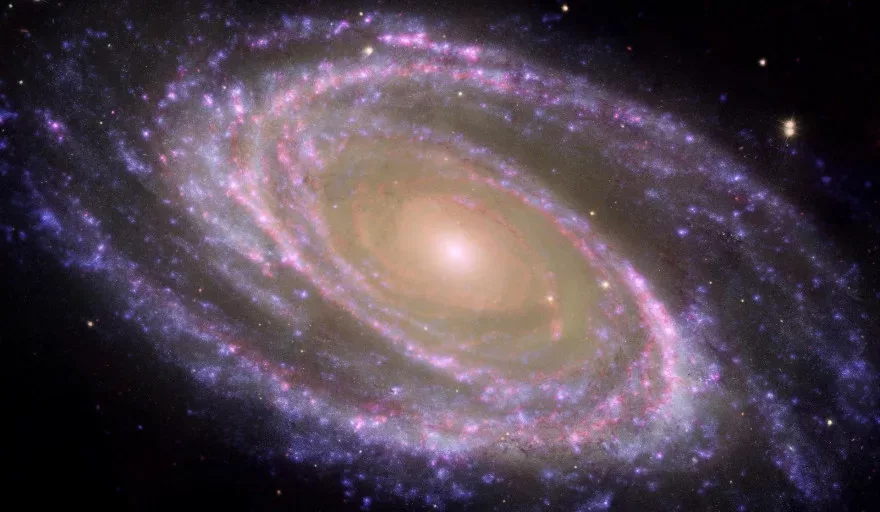Peering into the very depths of the universe gives scientists a better understanding of its origins. Since the speed of light is finite, the objects we are seeing are from the distant past. A recently completed EU-funded project developed not only a new means of measuring these cosmic distances, but also discovered galaxies at the point of their creation.
It is difficult to comprehend the sheer awe-inspiring enormity of the universe. It takes light eight minutes to travel from the sun to earth and four years for the light from the nearest star to reach our solar system. The light from more distant objects takes even longer to reach us, which in effect means that when we look at distant objects, we are looking at the universe – as it was – millions, sometimes billions of years ago.
In recent years, one of the most active fields of astronomy has been the study of ‘black holes’, which are formed when stars collapse at the end of their life cycle and have such a strong gravitational pull that nothing – including light – can escape. Every galaxy has a supermassive black hole at its centre, which was formed when the galaxy itself was born.
MEASURING THE UNIVERSE
The EU-funded BHMASS project, completed in 2012, focused on ‘quasars’. These are compact regions that scientists believe are at the very centre of massive galaxies. Project researcher Marianne Vestergaard thinks that the project will enable more accurate measurements of both black-hole masses and cosmic distances to be made in the future. The project also uncovered what could be the first generation of quasars: a cluster with smaller black holes without centrally located hot dust was discovered, indicating that star formation has yet to take place.
“Quasars reside at great distances – called ‘cosmic distances’ – because they are an early evolutionary phase of galaxies,” she explains. “So, by studying quasars, their black holes, and how they relate to their environments, we can learn about the physical processes that took place when galaxies were young.”
The main aim of the project was to enable the astronomical community to study, at much higher precision than is currently possible, the role that black holes play in shaping the universe. Using quasars, the researchers developed a new method of measuring cosmic distances, independent from existing distance measurements. This breakthrough, claims Vestergaard, could have important implications for astronomy.
“Why are distance measurements important? Well, we use cosmic distances to map the universe and its expansion history. A century ago, such measurements told Edwin Hubble that the universe is not static but is expanding. Just 15 years ago, similar precision measurements using supernovae showed us that not only is the universe expanding, but it is expanding at an increasing rate.”
Vestergaard says that the specific method developed by BHMASS is significant for several reasons. “First, it is important for the astronomical community to have another method to verify important measurements, because each method has its uncertainties, advantages and disadvantages. So the more independent methods we have to make these important measurements, the better.”
The second reason is that the method proposed by BHMASS can be applied to much longer distances than the current methods, offering a tool to probe into the very onset of the accelerated expansion and beyond. “I think there is a real opportunity for this new method to have quite a lasting impact,” continues Vestergaard.
Indeed, the researcher believes that the project has the potential to increase our understanding of how galaxies were formed, by identifying the first generation of quasars. “As quasars are born out of the densest concentrations of matter in the early universe, we can learn a lot about the first galaxies by studying these types of systems,” she says. “Identifying the truly first galaxies is an important first step.”
INSPIRING FUTURE SCIENCE STARS
Research like this can ultimately tell us where we came from and what our future will bring – profound questions which occupy us all at some level. “More immediately, I hope that these results – and the research that follows – will bring excitement to the general public about the natural sciences, physics and astrophysics. I also hope it will engage more young people to be curious and motivate them to follow an education within the natural sciences,” says Vestergaard.
In addition, the project brought home to her how important it is to think outside the box. “That is, to think little crazy thoughts once in a while on what is possible and what is not,” she observes. “These projects and their results have opened up several new and important research paths that I’d like to follow up on, and I hope to be able to obtain additional funding in order to hire PhD students and postdocs to work on these new exciting studies. It has been fun – but it isn’t over yet!”
SOURCE: The European Commission Research and Innovation Information Centre

































